 Backend Development
Backend Development
 PHP Tutorial
PHP Tutorial
 Example introduction: Use Docker to quickly build a multi-version PHP development environment
Example introduction: Use Docker to quickly build a multi-version PHP development environment
Example introduction: Use Docker to quickly build a multi-version PHP development environment
This article brings you relevant knowledge about PHP, which mainly introduces the relevant content on how to use docker to quickly build a multi-version PHP development environment. Let’s take a look at it together and hope it will be helpful to everyone. helpful.
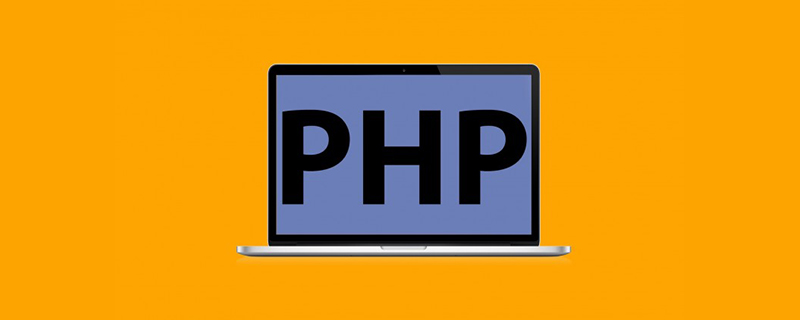
PHP Video Tutorial"
Software used in the article:- Mac: 11.4 (macOS Big Sur), processor: Intel Core.
- Docker: 3.3.3
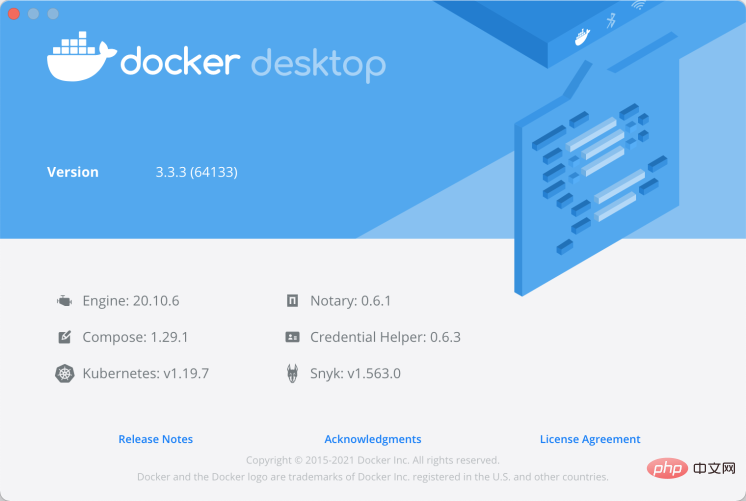 ## Target
## Target
Support PHP 5.6.x Environment
Supports PHP 7.2.x Environment
Download
Docker software download and installation, without too much explanation, just install it step by step.
Download address: Docker official website https://www.docker.com/products/docker-desktop
Agent settings
"registry-mirrors" : [
"http://registry.docker-cn.com",
"http://hub-mirror.c.163.com"
],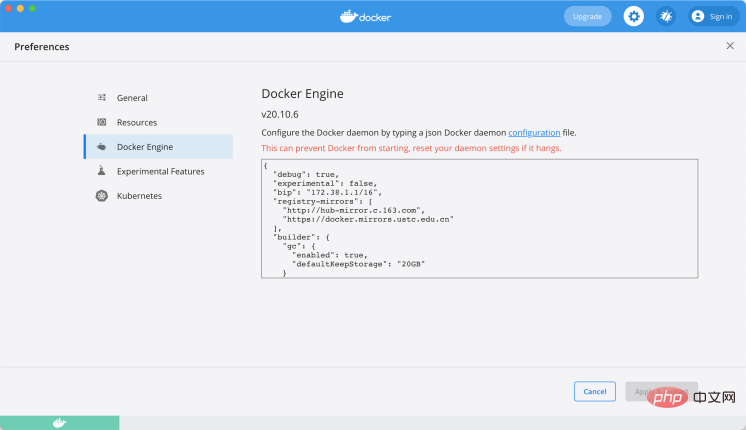 Configure environment
Configure environment
- Start docker;
- Download the compressed package: php7-2-x.zip and decompress it;
- Enter the php7-2-x directory and run docker-compose up directly;
- Browser input: http://127.0.0.1:8081/;
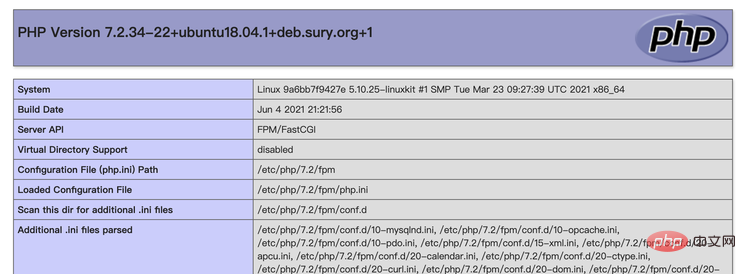 ##PHP 5.6.x , occupying local port 8082
##PHP 5.6.x , occupying local port 8082
Start docker;
- Download the compressed package: php5-6-x.zip and decompress it;
- Enter the php5-6-x directory and run docker-compose up directly;
- Browser input: http:// 127.0.0.1:8082/;
Port mapping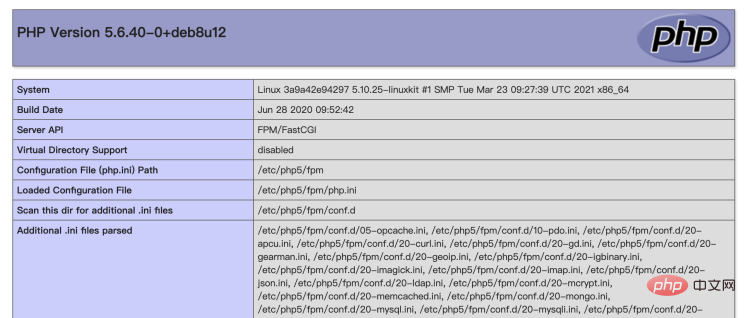
Download method:
Download from the Chrome App Store and search for Simple Proxy.
- Load the local extension, download address: chrome-simply-proxy[2]
- Look at the installed interface:
After successful configuration, visit http://local.php72.com/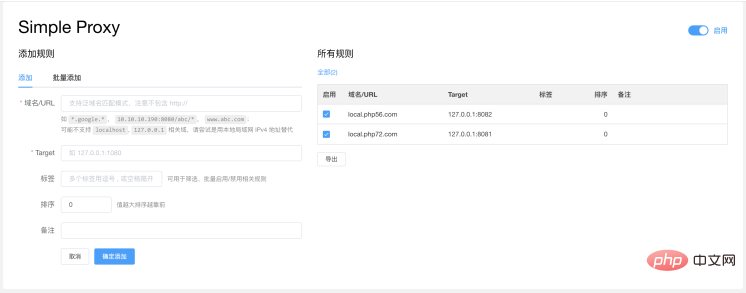
##local.php56.com - > 127.0.0.1:8082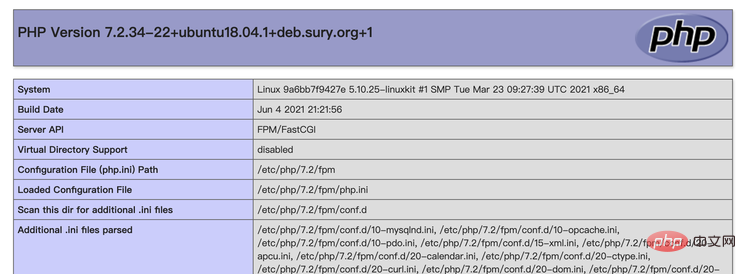
Same as above. Remarks
docker-compose related commandsdocker-compose up Build container parameters [-d] for background operation
docker-compose start Enable container
docker-compose stop Stop container
docker- compose restart Restart the container
docker-compose down Delete the container
- ##docker-compose ps View the current container status
php7-2-x Directory Introduction
├── docker-compose.yml
├── log
│ └── nginx
│ └── local.php72.com_access.log
├── phpdocker
│ ├── README.html
│ ├── README.md
│ ├── nginx
│ │ └── default.conf
│ └── php-fpm
│ ├── Dockerfile
│ └── php-ini-overrides.ini
└── web
└── phpinfo
└── index.phpversion: "3.1"
services:
webserver:
image: nginx:alpine
container_name: php7-2-x-webserver
working_dir: /application
volumes:
- .:/application
- ./phpdocker/nginx:/etc/nginx/conf.d
ports:
- "8081:80"
php-fpm:
build: phpdocker/php-fpm
container_name: php7-2-x-php-fpm
working_dir: /application
volumes:
- .:/application
- ./phpdocker/php-fpm/php-ini-overrides.ini:/etc/php/7.2/fpm/conf.d/99-overrides.iniserver {
listen 80;
server_name local.php72.com;
client_max_body_size 108M;
access_log /application/log/nginx/${server_name}_access.log;
root /application/web/phpinfo;
index index.php;
# try to serve file directly, fallback to index.php
location / {
try_files $uri /index.php$is_args$args;
}
if (!-e $request_filename) {
rewrite ^.*$ /index.php last;
}
location ~ \.php$ {
fastcgi_pass php-fpm:9000;
fastcgi_index index.php;
fastcgi_param SCRIPT_FILENAME $document_root$fastcgi_script_name;
fastcgi_param PHP_VALUE "error_log=/application/log/nginx/${server_name}_php_errors.log";
fastcgi_buffers 16 16k;
fastcgi_buffer_size 32k;
include fastcgi_params;
}
}- Add the file local.abc.com.conf and point the code directory to the abc directory in the configuration file;
- Restart the container docker-compose restart;
- php5-6-x directory introductionSame as above.
How to generate zip file?
You may have questions, how is the zip file generated? What if I want to build another version of the environment?These files are generated online, URL: https://phpdocker.io/generator[3]
Supported PHP versions are: 5.6. x, 7.0.x, 7.1.x, 7.2.x, 7.3.x, 7.4.x, etc.
It also supports MySQL, MariaDB, Elasticsearch, etc. 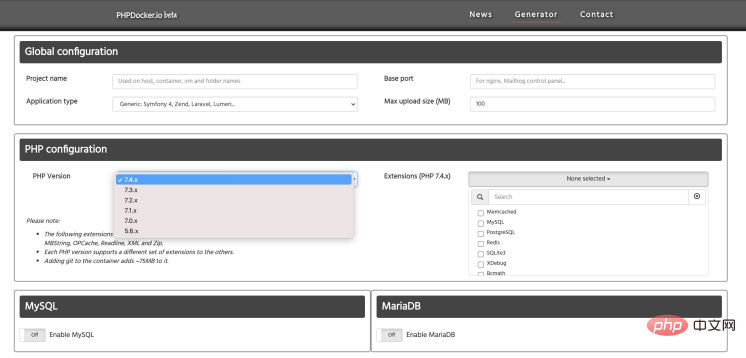
After selecting as needed, click Generate project archive to generate the compressed package.
The above php5-6-x.zip and php7-2-x.zip are generated in this way. They are just fine-tuned, such as configuring the log directory, web directory, etc.
Recommended learning: "PHP Video Tutorial"
The above is the detailed content of Example introduction: Use Docker to quickly build a multi-version PHP development environment. For more information, please follow other related articles on the PHP Chinese website!

Hot AI Tools

Undresser.AI Undress
AI-powered app for creating realistic nude photos

AI Clothes Remover
Online AI tool for removing clothes from photos.

Undress AI Tool
Undress images for free

Clothoff.io
AI clothes remover

Video Face Swap
Swap faces in any video effortlessly with our completely free AI face swap tool!

Hot Article

Hot Tools

Notepad++7.3.1
Easy-to-use and free code editor

SublimeText3 Chinese version
Chinese version, very easy to use

Zend Studio 13.0.1
Powerful PHP integrated development environment

Dreamweaver CS6
Visual web development tools

SublimeText3 Mac version
God-level code editing software (SublimeText3)

Hot Topics
 1665
1665
 14
14
 1423
1423
 52
52
 1321
1321
 25
25
 1269
1269
 29
29
 1249
1249
 24
24
 PHP and Python: Comparing Two Popular Programming Languages
Apr 14, 2025 am 12:13 AM
PHP and Python: Comparing Two Popular Programming Languages
Apr 14, 2025 am 12:13 AM
PHP and Python each have their own advantages, and choose according to project requirements. 1.PHP is suitable for web development, especially for rapid development and maintenance of websites. 2. Python is suitable for data science, machine learning and artificial intelligence, with concise syntax and suitable for beginners.
 PHP in Action: Real-World Examples and Applications
Apr 14, 2025 am 12:19 AM
PHP in Action: Real-World Examples and Applications
Apr 14, 2025 am 12:19 AM
PHP is widely used in e-commerce, content management systems and API development. 1) E-commerce: used for shopping cart function and payment processing. 2) Content management system: used for dynamic content generation and user management. 3) API development: used for RESTful API development and API security. Through performance optimization and best practices, the efficiency and maintainability of PHP applications are improved.
 PHP: A Key Language for Web Development
Apr 13, 2025 am 12:08 AM
PHP: A Key Language for Web Development
Apr 13, 2025 am 12:08 AM
PHP is a scripting language widely used on the server side, especially suitable for web development. 1.PHP can embed HTML, process HTTP requests and responses, and supports a variety of databases. 2.PHP is used to generate dynamic web content, process form data, access databases, etc., with strong community support and open source resources. 3. PHP is an interpreted language, and the execution process includes lexical analysis, grammatical analysis, compilation and execution. 4.PHP can be combined with MySQL for advanced applications such as user registration systems. 5. When debugging PHP, you can use functions such as error_reporting() and var_dump(). 6. Optimize PHP code to use caching mechanisms, optimize database queries and use built-in functions. 7
 The Enduring Relevance of PHP: Is It Still Alive?
Apr 14, 2025 am 12:12 AM
The Enduring Relevance of PHP: Is It Still Alive?
Apr 14, 2025 am 12:12 AM
PHP is still dynamic and still occupies an important position in the field of modern programming. 1) PHP's simplicity and powerful community support make it widely used in web development; 2) Its flexibility and stability make it outstanding in handling web forms, database operations and file processing; 3) PHP is constantly evolving and optimizing, suitable for beginners and experienced developers.
 PHP vs. Python: Understanding the Differences
Apr 11, 2025 am 12:15 AM
PHP vs. Python: Understanding the Differences
Apr 11, 2025 am 12:15 AM
PHP and Python each have their own advantages, and the choice should be based on project requirements. 1.PHP is suitable for web development, with simple syntax and high execution efficiency. 2. Python is suitable for data science and machine learning, with concise syntax and rich libraries.
 PHP and Python: Code Examples and Comparison
Apr 15, 2025 am 12:07 AM
PHP and Python: Code Examples and Comparison
Apr 15, 2025 am 12:07 AM
PHP and Python have their own advantages and disadvantages, and the choice depends on project needs and personal preferences. 1.PHP is suitable for rapid development and maintenance of large-scale web applications. 2. Python dominates the field of data science and machine learning.
 PHP vs. Other Languages: A Comparison
Apr 13, 2025 am 12:19 AM
PHP vs. Other Languages: A Comparison
Apr 13, 2025 am 12:19 AM
PHP is suitable for web development, especially in rapid development and processing dynamic content, but is not good at data science and enterprise-level applications. Compared with Python, PHP has more advantages in web development, but is not as good as Python in the field of data science; compared with Java, PHP performs worse in enterprise-level applications, but is more flexible in web development; compared with JavaScript, PHP is more concise in back-end development, but is not as good as JavaScript in front-end development.
 PHP and Python: Different Paradigms Explained
Apr 18, 2025 am 12:26 AM
PHP and Python: Different Paradigms Explained
Apr 18, 2025 am 12:26 AM
PHP is mainly procedural programming, but also supports object-oriented programming (OOP); Python supports a variety of paradigms, including OOP, functional and procedural programming. PHP is suitable for web development, and Python is suitable for a variety of applications such as data analysis and machine learning.



